Mina da Bathalha Paraiba, Brazil Tourmalines are available in a great number of colors, but the rarest, most valuable and legendary are those known as “Paraiba”, named after the Brazilian state in which they are mined. Discovered in only 1989, this sensational find is attributed to Heitor Dimas Barbosa, now known as the "Father of the Paraiba Tourmaline”. The gemstone prospector, armed with only a handful of workers, but burning with a deep conviction, followed a vision that he would discover a unique gem. He persisted in digging by hand for years in the pegmatite layers of a small mountain range. Digging initially in old abandoned mines, an activity which proved fruitless, a further five and a half years of toil resulted in a labyrinth of shafts which revealed the first evidence of a new tourmaline occurrence. The crystals brought to the surface showed colors never before dreamt of. Barbosa, who was ill at the time, was not even there at the find—the first rough crystals were sold without his seeing them. The reputation of these vivid, electric turquoise blue tourmalines spread and in the next five years the small mountain range measuring only 400 x 200 x 65 meters, underneath which they were found, was riddled with shafts and tunnels—the mountain was practically leveled, thereby eliminating the prospect of any further finds. Demand was strong and immediate and the market almost completely soaked up the limited offer of rough stones. Tourmalines come in a rainbow series of colors but, while other tourmalines owe their colors to traces of iron, manganese, chromium or vanadium, Paraiba tourmalines owe their spectacular color to a high concentration of copper, an element not previously seen in tourmalines. However, one recent study by the German Foundation for Gemstone Research also discovered a surprisingly high gold content in Paraibas. While the average gold content of the earth’s crust is 0.007 parts per million, Paraiba tourmalines contain a remarkable 8.6 parts per million. Fortunately, their supply is limited—and if they weren’t so beautiful, they might be in danger of being crushed to salvage the gold! The exceptionally vivid character of Paraiba tourmalines , however, can only be appreciated after the stone has been faceted; it is only then that its unique fire and brilliance are displayed, making the stone seem to glow with an internal light—they are truly luminous. Paraiba tourmalines are typically only seen in smaller carat sizes as the crystals mined at the mountain were almost entirely splinters and fragments—unfragmented rough over 5 grams was virtually unheard of as it is usually found only in small pencil-thin veins. Fine color faceted stones of over 1 carat are very rare. Truly a stone for the unusual gemstone collector, Paraibas are rarely even carried by the typical retailer. Its beauty explains the enthusiasm shown for the material which now ranks among the most coveted and valuable of all gemstones. The present pear-shaped faceted gem exhibits the most desirable, brilliant “swimming pool” or “neon” blue color, with very good luster, mounted as a pendant in 14K white gold heart-shaped frame, flanked by scrolled accents. Weighing approximately 2.0 carats and measuring 9.2 x 6.7 x 4.1 mm.
Mina da Bathalha Paraiba, Brazil Tourmalines are available in a great number of colors, but the rarest, most valuable and legendary are those known as “Paraiba”, named after the Brazilian state in which they are mined. Discovered in only 1989, this sensational find is attributed to Heitor Dimas Barbosa, now known as the "Father of the Paraiba Tourmaline”. The gemstone prospector, armed with only a handful of workers, but burning with a deep conviction, followed a vision that he would discover a unique gem. He persisted in digging by hand for years in the pegmatite layers of a small mountain range. Digging initially in old abandoned mines, an activity which proved fruitless, a further five and a half years of toil resulted in a labyrinth of shafts which revealed the first evidence of a new tourmaline occurrence. The crystals brought to the surface showed colors never before dreamt of. Barbosa, who was ill at the time, was not even there at the find—the first rough crystals were sold without his seeing them. The reputation of these vivid, electric turquoise blue tourmalines spread and in the next five years the small mountain range measuring only 400 x 200 x 65 meters, underneath which they were found, was riddled with shafts and tunnels—the mountain was practically leveled, thereby eliminating the prospect of any further finds. Demand was strong and immediate and the market almost completely soaked up the limited offer of rough stones. Tourmalines come in a rainbow series of colors but, while other tourmalines owe their colors to traces of iron, manganese, chromium or vanadium, Paraiba tourmalines owe their spectacular color to a high concentration of copper, an element not previously seen in tourmalines. However, one recent study by the German Foundation for Gemstone Research also discovered a surprisingly high gold content in Paraibas. While the average gold content of the earth’s crust is 0.007 parts per million, Paraiba tourmalines contain a remarkable 8.6 parts per million. Fortunately, their supply is limited—and if they weren’t so beautiful, they might be in danger of being crushed to salvage the gold! The exceptionally vivid character of Paraiba tourmalines , however, can only be appreciated after the stone has been faceted; it is only then that its unique fire and brilliance are displayed, making the stone seem to glow with an internal light—they are truly luminous. Paraiba tourmalines are typically only seen in smaller carat sizes as the crystals mined at the mountain were almost entirely splinters and fragments—unfragmented rough over 5 grams was virtually unheard of as it is usually found only in small pencil-thin veins. Fine color faceted stones of over 1 carat are very rare. Truly a stone for the unusual gemstone collector, Paraibas are rarely even carried by the typical retailer. Its beauty explains the enthusiasm shown for the material which now ranks among the most coveted and valuable of all gemstones. The present pear-shaped faceted gem exhibits the most desirable, brilliant “swimming pool” or “neon” blue color, with very good luster, mounted as a pendant in 14K white gold heart-shaped frame, flanked by scrolled accents. Weighing approximately 2.0 carats and measuring 9.2 x 6.7 x 4.1 mm.

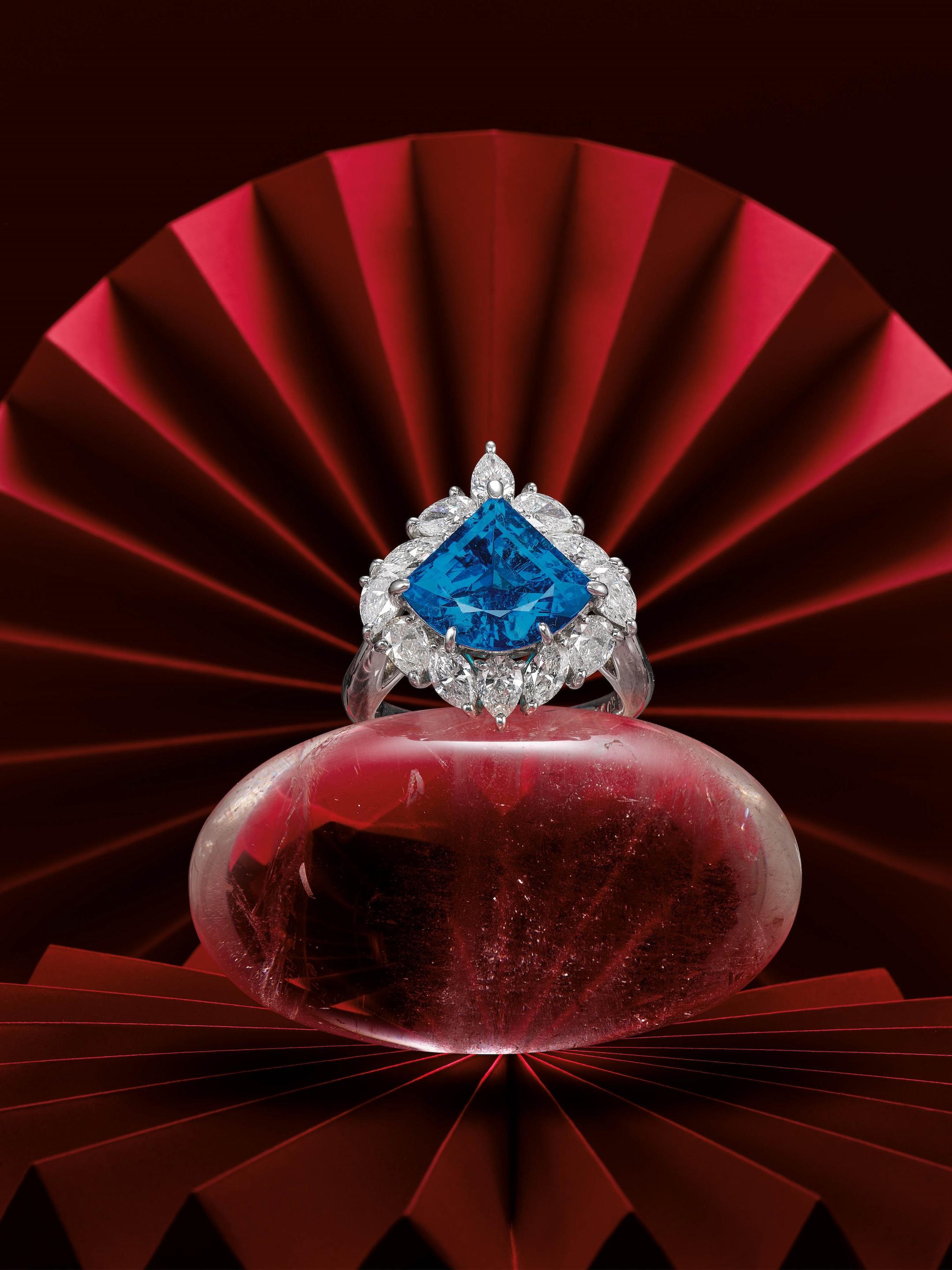
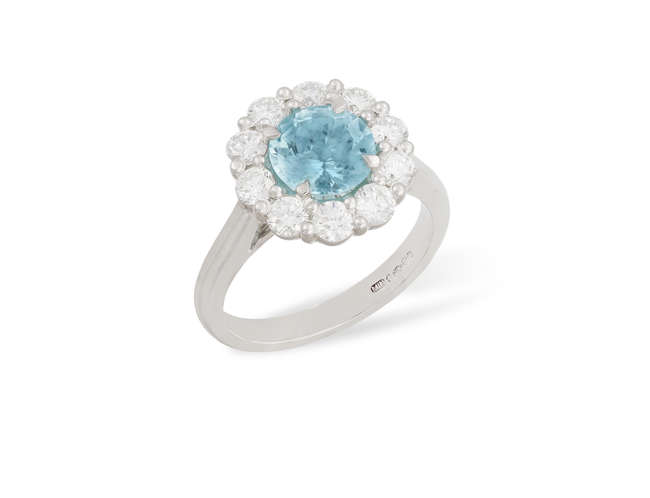

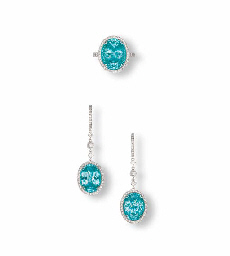

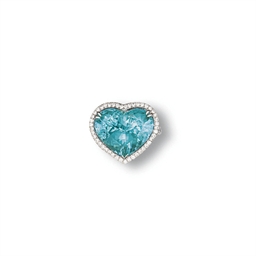
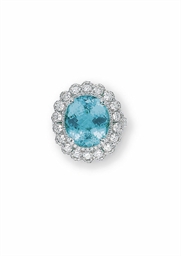
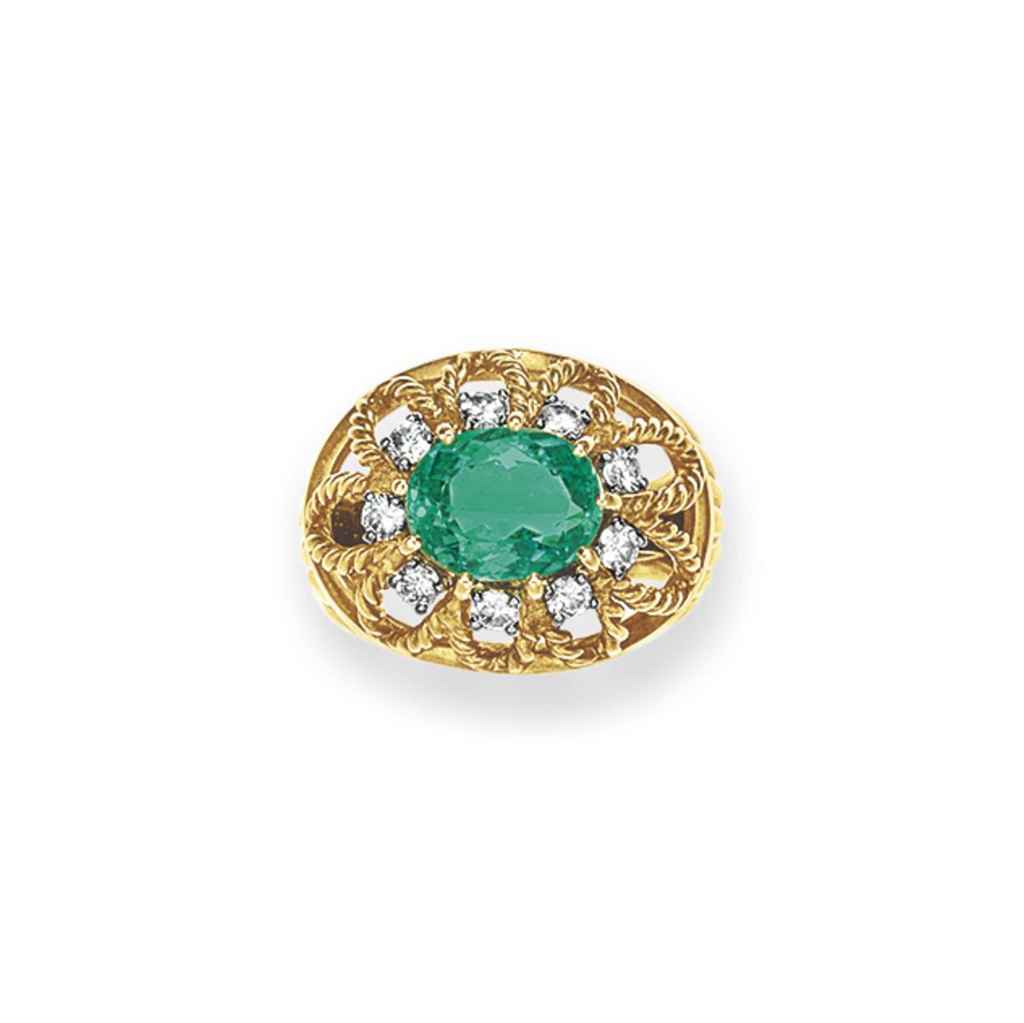
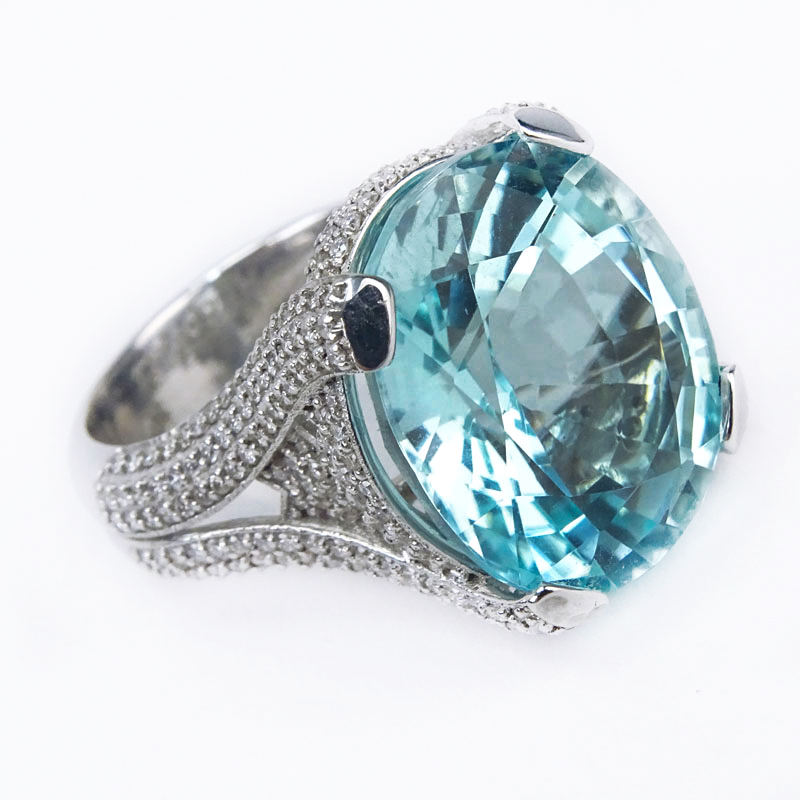

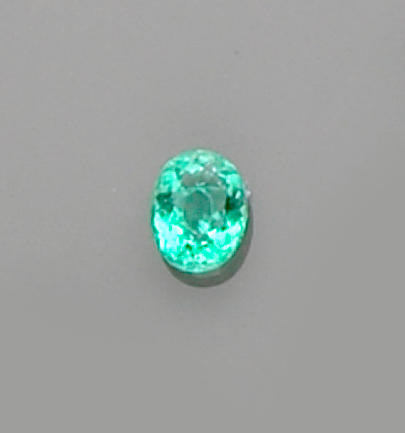

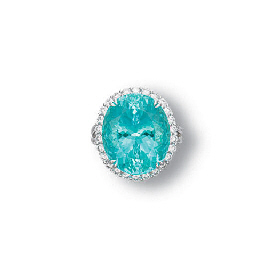

Try LotSearch and its premium features for 7 days - without any costs!
Be notified automatically about new items in upcoming auctions.
Create an alert